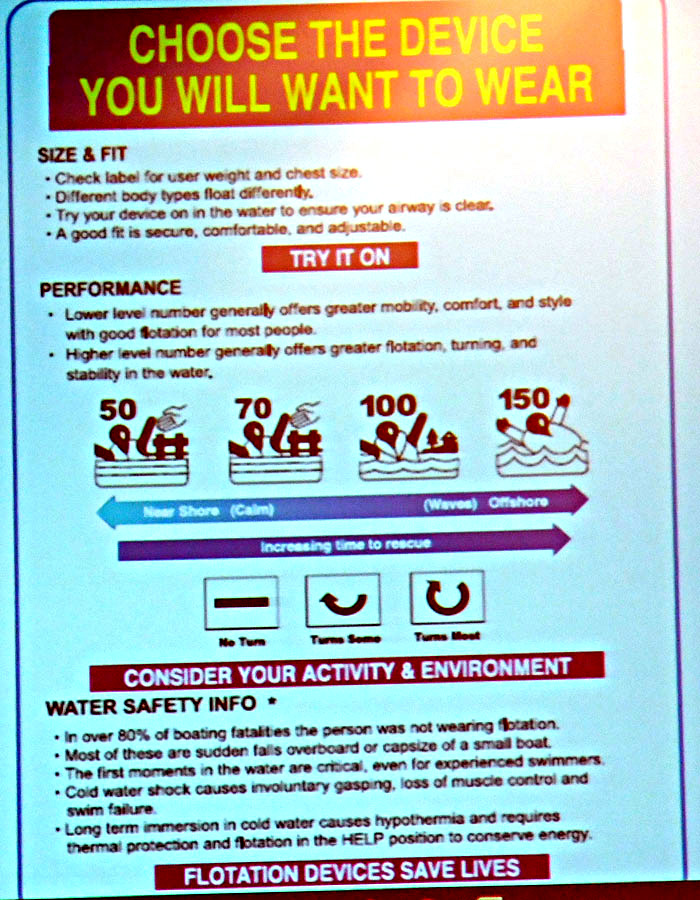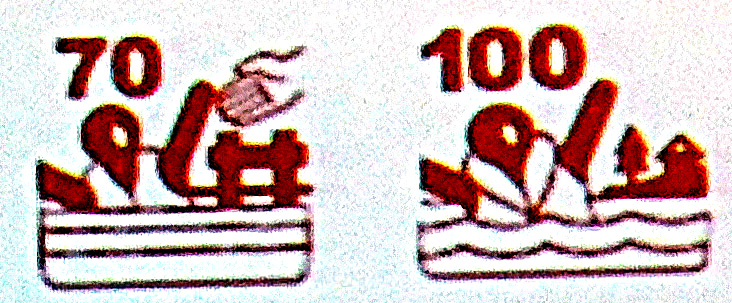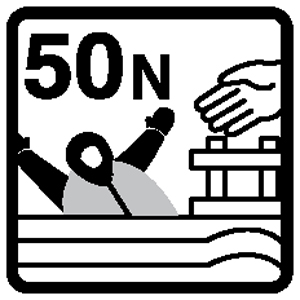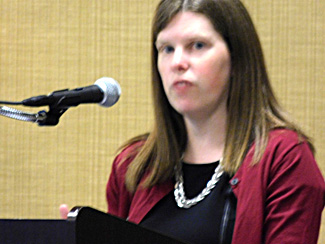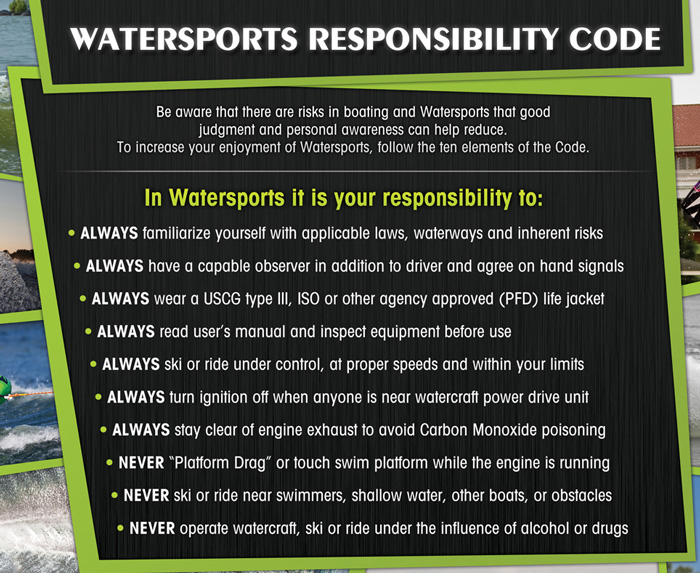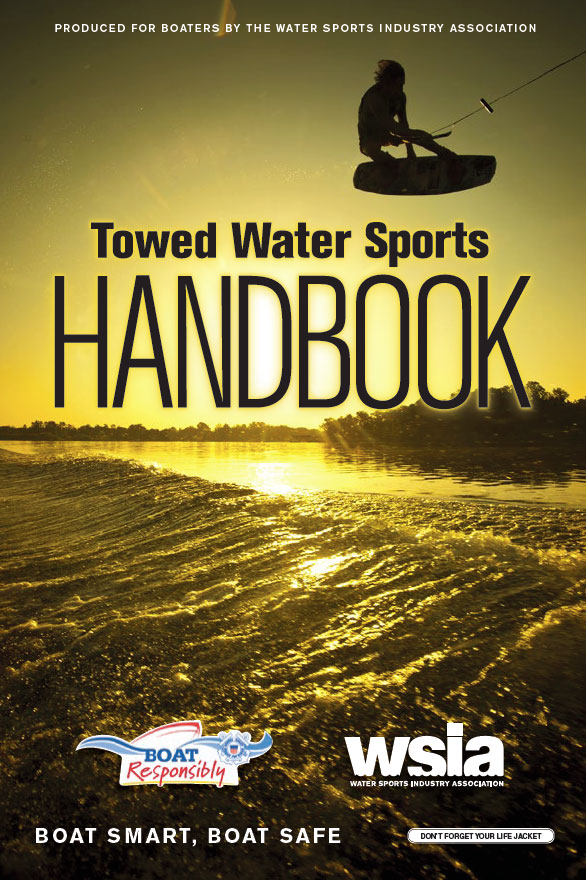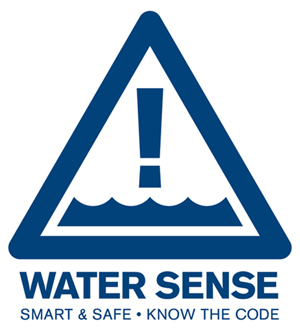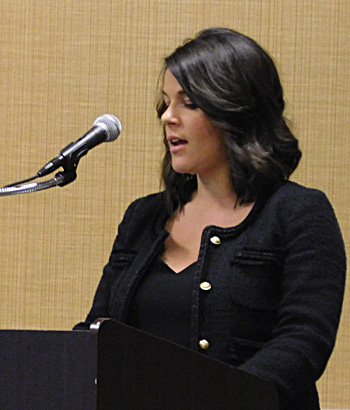U.S. Coast Guard NBSAC97 meeting part 2
U.S. Coast Guard National Boating Safety Advisory Council (NBSAC) 87th meeting in Arlington Virginia March 23-25, 2017. Part 2 of our coverage.
Thursday Early Afternoon 25 March 2017.
Subcommittee Meetings
Much of the work of NBSAC occurs in the three subcommittees:
1. Boats & Associated Equipment Subcommittee
2. Prevention Through People Subcommittee
3. Strategic Planning Subcommittee
Each Subcommittee presented some topics Thursday afternoon.
Boats & Associated Equipment Subcommittee
Pete Chisholm of Mercury Marine chairs this subcommittee.
Visual Distress Signals
Marty Jackson of USCG presented on Visual Distress Signals.
Traditionally boaters carried flares for visual distress signals. Some LED lights are now bright enough to meet nighttime use requirements. The current lights do not work well in daylight.
The technical criteria they have been looking at does not include affordability or durability.
They are considering flashing them at 4 Hertz (4 times per second) or flashing them to sent “S-O-S” in Morse code.
There was considerable discussion about some LED products currently on the market claiming to be USCG approved.
Besides convenience, an LED light that COULD also work in daylight could eliminate the need for flares. It would also eliminate the need to track flare expiration dates and properly dispose of them.
Life Jackets
Jackie Yurkovich of USCG gave an update on the transition to new life jacket approval standards.
Basically they are trying to harmonize U.S. life jacket standards with Canada AND Canada’s standard is much closer to the international standard.
By bringing the standards together (harmonizing them), those building life jackets will no longer have to build special life jackets for each country.
Our current Level 3 life jackets are equivalent to Level 70 Canadian life jackets.
Canadian Level 100 and Level 150 life jackets are basically equivalent to some of our higher level life jackets.
Basically, the labeling will change. They hope to only have one or two boating seasons with both labels (old and new) in the marketplace to reduce confusion.
Currently approved devices will get the new label with no additional testing. Manufacturers will go through a review and have the new label placed in their file, their life jackets will not have to be retested to meet the new equivalent harmonized standard. It will say UL1123. There is no different information. It just appears different.
In this first phase there is not a performance difference.
Currently expect this to take place in the 2019 or 2020 boating season. They hope the policy is out in the next few months.
While this all sounded good, when the new labels were shown, there was considerable confusion. Several present did not understand the graphics.
Jeff Jenson said, you said the graphics in particular were being used in other countries, ISO, whatever. Do you happen to know if anybody has ever tested them on the public to find out what their perception is. Because, frankly, when I explain what a life jackets can do or can’t do for somebody, I tell them to read the label. There’s ten thousand words on the label, but its very clear its approved for a PWC or its not. There is no interpretation necessary, you just read the label. With this one, I’m not comfortable that the average person walking into Wal-mart will know what that graphic means or whatever. So I’m wondering if maybe some testing has been done on using those paper graphics to see if people “get it”. Cause I didn’t “get it” and and Mr. Marlow didn’t “get it”. I’m just wondering it that’s been done.
She was not sure if there has been testing in the U.S. with these exact graphics. She knows they did a study about 2007ish on label graphics and the evidence showed graphics are more compelling than text. That’s whey they went with the graphics We based it on the ISO standard so they kept with their style of graphics.
One guy (Tom?) said “It looks like a Cyclops to me.” He wonders why we went with a one eyes object. She thinks its not an eye, she thinks it like a flare. She’s not exactly sure. One person said it was a mouth.
She said the icons are very close to the icons we have here.
Phil Dyskow of Yamaha asked what the overriding purpose of this change. She said to help you to select the device based where you are in the water, your activity type, and your need.
The lady presenting the topic said the symbology is not familiar to us South of the Canadian border but it is known internationally.
Roxanne Standover in attendance from Canada said, there will be backup materials and websites to support the change. She thinks all we need to do is have a positive attitude. We can get free publicity to talk about the new labels. You deserve to have choice for your personal protective type. You now have choice and you now have personal responsibility.
The presenter said the numbers (70, 100 150) do correlate with buoyancy, but they do no exactly correlate.
Changes is supposed to increase innovation. The new standard is much more performance based and will increase innovation.
She said we are now 10 years into this process.
Chris Day said we do not sell the Level 50s. That is where the innovation will start. There is hope for innovation on the long time frame (long term).
Roxanne Standover from Canada said, Level 50 is where the real innovation will happen. She thinks we (the U.S.) should look at Level 50, we call them buoyancy aids. They are more comfortable and will help increase wear rates.
There is a standard for people wearing guns and tools working near the water.
Level 50 requires more personal skills.
Chris Evans of BoatUS mentioned their annual life jacket design competition they have held the last 5 or 6 years. Last year they received entries from 38 states and about 20 countries. It will be coming up in a few months.
Captain Boross said we are not the approval of the label. That is beyond the authority of his office. This is an international cooperation.
Richard Moore said that if Europeans could understand the labels, we could as well, but outreach would be critical. He noted the current hang tag has multiple pages and nobody reads it. He wanted to go on record as saying he believes this is going to be the most significant opportunity we are going to have in our lifetimes to educate U.S. boaters about life jackets and life jacket wear and its critical that we get this right when it does roll out. He also asked if they or other groups could do anything to assist with outreach or to help knock down barriers to help get it moved along and implemented. She said her group would not be handling outreach, she thinks there are some grants for that, but she would be making sure it gets done.
A PFDMA (Personal Floatation Device Manufacturers Association) representative said PFDMA is no longer a subset of NMMA, they are now under NASBLA. He said that to suggest these efforts had not been vetted would be unjust.
PropellerSafety.com note – I visited with NASBLA shortly later. PFDMA is not part of NASBLA. The PFDMA representative was mistaken.
The presenter said these slides had not been prepared as a teaching exercise. When they present some people think it looks like turkey or a duck. What everybody here and the associated organizations can best do is have a positive attitude. We shouldn’t be seeing this as huge problem that we have to explain the labels, we should see it as an opportunity to go out and get some free publicity about education and about life jackets that we haven’t had before. Even if we are kinda faking it that there are these huge changes coming. Its not going to be that hard. People will look for the size, they will try it on. You deserve to have choice about your personal protection equipment. We’ve created a performance standard that allows you to choose the best device for you, your body type, your activity, and where your boat. That’s what the important part of the standard is, not the label. You now have choices and you now have personal responsibility in that area. She thinks the problem of the change and education is perhaps over extended.
Someone said, we started this to gain access to some of the better made life jackets from Europe, different designs, and more opportunities to bring in to the United States different types of life jackets. If we are just changing labels and nothing else, why do it? I’m not sure we have a problem with people choosing a life jacket, we have a problem with people wearing a life jacket.
PropellerSafety.com note – the images of the icons above came from a photo of the screen during the presentation. Other similar images were also shown. It was very hard to try to figure out what they represented. I thought the hand reaching down in the left image looked like a crescent wrench and also thought the people wearing life jackets looked like they had one huge eye. Life jackets are not our expertise, but we do have a lot of experience with warning icons. It seems odd to change to non tested labels and icons that NBSACs own people could not understand when adult wear rates in open motorboats are at a dismal 5 percent. Eventually I understood the 50 and 70 graphics were supposed to be someone in the water near a dock, where help was quite close. The 100 graphic was near shore where help was not too awful far away, the 150 graphic out in open water or the ocean.
PropellerSafety.com note2 – is now about two weeks after the meeting. Online I just learned the numbers (50,70,100,150) associated with the life jacket graphic icons refer to the minimum number of Newtons of buoyancy the jacket has (Newtons are metric units of force). As an engineer it would have sure helped if someone would have mentioned the numbers represented minimum Newtons of buoyancy earlier.
PropellerSafety.com note 3 – I found several images of the ISO (International Standards Organization life jacket icons. Several of them were not consistent with each other. The image at left is an example. I found it much easier to understand. Putting hands at the end of the arms of the person in the water, making the life jacket gray, opening up the person’s face, turning the dock structure white, adding “N” for Newtons, and making the helping hand look more like a hand make the image much easier for me to understand. I am not positive this is an approved ISO image, but it could certainly stimulate some conversation when compared with the Canadian 50 icon.In the next segment of the program, three non-profits are going to talk about their Partnership Activities (grants) with the Coast Guard.
(1) National Safe Boating Council on their propeller safety and engine cutoff switch (kill switch) campaigns
(2) Water Ski Industry Association o their educational work
(3) National Marine Manufacturing Association (NMMA) activities to promote boating safety
Propeller Safty and Engine Cutoff Switch (kill switch) Safe Boating Campaigns by National Safe Boating Council (NSBC)
by Rachel Johnson who is also a member of NBSAC
She is going to breeze through this really quick because she has fantastic news about their proposed engine cutoff switch and safe boating campaign. It is completely new. She mentioned she was looking at people like Mr. Polson (me) and Anthony (Anthony Viggano of Autotether). She said we should be a part of this.
Earlier they had “clip it” as a brand / logo (reasonably similar to the seat belt slogan – Click it or Ticket)
The goal is to educate boaters on propeller strike injuries and avoidance, specifically though wearing engine cutoff devices.
Focusing on the tragic component of it, but offering that proactive solution, the engine cutoff device.
Want to cultivated a better prepared boater public. While nurturing our collaborative effort.
This week they chose the communications and public relations firm they will be working with. They chose abbi agency. abbi does have some experience working with boating agencies, like Nevada.
There is much work to do. They will start with the basics. What’s the messaging supposed to look like and what’s out strategy going forward. They plan to use focus groups, interviews, and working with partners to make sure we are meeting their target audience. And then the brand and logo development.
As she mentioned earlier, they turned in “clip it” a year ago, but they are not sure it will reach the audience. It was just a placeholder. Some other logo and brand may surface during their market research.
Will then start to get into the deliverable element. With the added group they will be developing things that are known in an outreach and educational campaign. Will also have a digital component. The campaign will be high demand low budget.
Having the media wanting to share this campaign.
Social media deliverables and printed materials.
Thought about making an entire website, but determined to do a microsite, similar to the saved by the beacon campaign.
An overall campaign toolkit for our partners once this is ready to go.
They have a timeline for basic events.
They plan to really get this campaign out with focus in June.
What is our measure. It’s engagement and that behavior change element. Every thing they do will have the call to action. Getting the individual to wear the engine cutoff device. And how all these elements tie into doing so.
There will be more info by tomorrow on the registration rate.
Jeff (a member of the council) mentioned personal watercraft and how runaway boats are a game ender for us (can run over them). So he hopes she will mention all the reasons to wear the engine cutoff device, not just prop strikes.
Matt Walz, council member from Missouri Water Patrol, mentioned many of the prop deaths are not engine cutoff related and encouraged her not to forget that. Sometimes its as simple as not turning the boat off when people are entering or exiting the boat.That’s the common prop cuts that we see in my state.
I made a public comment at this time. Just add with some of the surveys and things we talked about earlier, we’re really short of wear rate data. Wear rate data could help drive her end of things. If we really recognized on a piece of paper that the wear rates in various states and areas are like dismal. I think that would help encourage what she’s talking about.
Captain Boross asked if I was talking about the wear rate on the lanyard and also of the electrical, correct.
I responded, yes, on wearing either type of device. The data is extremely sparse. There’s lots of little pieces and we have gathered many of them. We’ve made estimates off the BARD data. On the BARD data for like any kind of accident for which it is recorded for wearing or not, rates are down to 13 to 30 percent. But it also shows life jacket wear rates much higher than they are observed.
PropellerSafety.com thought after the meeting, I should have mentioned the use of “kill switch” vs. “engine cutoff device” and boaters not understanding the second phrase.
Educational Work by Water Ski Industry Association (WSIA)
presented by Larry Meddock WSIA
PropellerSafety.com note – In 2003 WSIA founded the Water Sports Foundation (WSF) as its non-profit educational arm. WSF was specifically designed to to be WSIA’s boating safety and education division. WSF has been very successful in securing USCG non-profit grants. WSF was awarded $700,000 in 2014, $825,000 in 2015, and $1,100,000 in 2016. Jim Emmons WSIA’s WSF grant manager currently serves on NBSAC.
WSIA developed some of these materials in conjunction with the Coast Guard, and some of them on their own. WSIA’s general council previously worked for the snow ski industry and developed a responsibility code for snow skiers. Their general counsel used that as a starting place from which to develop the Watersports Responsibility Code below.
WSIA developed the Towed Watersports Handbook. The handbook is currently in the rewrite stage. Mr. Meddock noted they would be removing the USCG “Boat Responsibly” logo from the cover. They were once approved to use the logo on the handbook, but are no longer approved to use it there.
The Fedorko Foundation (named for Emily Fedorko who died by a boat propeller strike a few years ago) contacted WSIA about sponsoring the handbook. The back page is a dedication to Emily Fedorko.
PropellerSafety.com note – Mr. Meddock described the accident that claimed the life of Emily Fedorko. His description of the accident bore little similarity to what was reported by the media. He said her inattentive boyfriend backed over her. Per accident reports, four teenage girls were tubing. Two fell from a tube, the other two girls came back around to pick them up. The two girls in the water were struck by the propeller. There was no boyfriend on the vessel.
WSIA developed a Water Sense Logo in conjunction with the Watersports Responsibility Code.Tow boat builders are now including the handbook in the packet of information provided with new boats.
PropellerSafety.com note – We were unable to find the handbook (its contents) online on the WSIA web site. Their site does sell it in quantities for 99 cents per copy. No minimum order quantity is listed. It would receive much more circulation if WSIA put it on their website.
Captain Boross asked if they could put some notation about water temperature on the cover of the handbook (list the water temperature). Several times during the meeting USCG spoke of their concerns surrounding cold water exposure / hypothermia. He also suggest the white “Know the Code” warning include “Know the Temperature”.
Mr. Meddock said, Done.
He tried to show their tubing safety video but had technology challenges. The video is available from YouTube below.
They were able to show the tubing safety video at the end of the day after the meeting was adjourned. This video was also dedicated in part by the Fedorko Foundation in memory of Emily Fedorko.
Mr. Meddock said they had Q-codes printed on every tube that link cell phones to the video above.
He said there are no standards for testing tubes and showed a video in which they worked with Guidance Engineering of Seattle to instrument elite athletes, tubes, ropes, and vessels to gather data for the formulation of a testing standard.
The video was titled, Scientific Study and Research for Emerging Popularity of Inflatables”.
PropellerSafety.com note – the tube testing video was very interesting. We hope they publicly release it in the future.
Mr. Meddock said similar, but separate testing was done to see how far a tube would slide when a rope broke, such as a tube whipping around, the rope breaking, and the tube crashing into the dock. He said they will not go very far, only a maximum of about about 50 to 60 feet. He said they stop fairly quickly because of high drag on the tubes. They tested a 3 man tube with 520 pounds of people on it. He said if that tube went 50 to 60 feet he would eat his hat. They also tested a light tube with a small girl on it. This tube also stopped quickly after it was released.
He said, if someone says the line broke and they whipped into the dock, you know the line separated after they hit that dock, it didn’t separate before.
Mr. Meddock said it looks like they need to stay a minimum two rope lengths from fixed objects (most tube tow ropes are 60 feet in length). It is not yet official, but they will probably say to stay 150 feet from fixed objects.
NMMA’s Activities to Make Boating Safer
She said they work with dealers, distributors, and others and try to be the source of safety information.
NMMA prints the Recreational Boating Statistical Abstract.
NMMA develops economic infographic helps for here and with key decision makers in USCG, on the hill, and in the White House.
They work with Discover Boating and helped with USCG Proceedings issue.
They bring boating safety to boat shows, right to the consumers.
She talked about a triad of the Industry, the Coast Guard, and the Legislature.
NMMA can help move regulations.
NMMA promotes mandatory wear of lanyards and engine cut off switches. She things they may be able to use the model of the Coast Guard bill that passed in 2015 and get the Coast Guard, industry, and legislators to come together and see if we can move the ball on that.
PropellerSafety.com note – not sure if she heard USCG comments earlier today about all future regulations being dead at this time or not. Plus they already had over a decade to pass it. There were NBASC resolutions for mandatory installation of kill switches in certain sizes of power boats and for their mandatory use when one was present way back in 2006.)
NMMA helps makes sure people that buy boats register them. Registration count helps the Trust Fund.
NMMA also works on boating infrastructure.
Are assisting the government develop economic impact numbers for boating.
The second half of her presentation was on ethanol and biobutanol.
PropellerSafety.com note – the first half of her presentation appeared to be somewhat of a canned presentation about the kind of thinks NMMA does on the Federal side of their operations. A few of those items certainly have something to do with boating safety but most of them are far from the Venn Diagram Chairman Maxim opened the meeting with (the huge proportion of boat fatalities in which alcohol or drownings were involved). The ethanol part of her presentation felt totally out of place to us. We agree ethanol is a very important issue to the boating industry, but failed to see its relevance to this meeting.
END of part 2 of our coverage
Links to the meeting agenda and all 5 parts of our NBSAC97 coverage are below.
